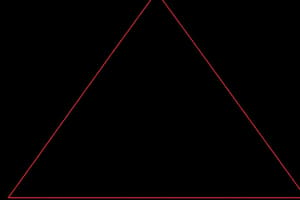Podcast
Questions and Answers
What is the area formula for a triangle?
What is the area formula for a triangle?
- $A = b \times h$
- $A = 2 \times b \times h$
- $A = \frac{1}{2} \times b \times h$ (correct)
- $A = \frac{1}{4} \times b \times h$
How is the area of a triangle calculated?
How is the area of a triangle calculated?
- Multiplying the base and height
- Multiplying the base and height and dividing by 2 (correct)
- Adding the base and height and then dividing by 2
- Adding the base and height
What is the area formula for a parallelogram?
What is the area formula for a parallelogram?
- $A = 2 \times b \times h$
- $A = \frac{1}{4} \times b \times h$
- $A = \frac{1}{2} \times b \times h$
- $A = b \times h$ (correct)
How is the area of a parallelogram calculated?
How is the area of a parallelogram calculated?
What should you do first to calculate the area of a triangle?
What should you do first to calculate the area of a triangle?
What should you do first to calculate the area of a parallelogram?
What should you do first to calculate the area of a parallelogram?
Flashcards are hidden until you start studying
Study Notes
Area of Triangles and Parallelograms
In this article, we will discuss the area formulas for triangles and parallelograms, as well as how to calculate the area of composite shapes.
Triangle Area Formula
The area of a triangle can be calculated using the formula:
$$A = \frac{1}{2} \times b \times h$$
Where:
- $$A$$ is the area of the triangle,
- $$b$$ is the base of the triangle, and
- $$h$$ is the height of the triangle perpendicular to the base.
Calculating Area of Triangles
To calculate the area of a triangle, follow these steps:
- Identify the base and height of the triangle.
- Plug the values of the base and height into the formula: $$A = \frac{1}{2} \times b \times h$$.
- Solve the equation for the area.
Parallelogram Area Formula
The area of a parallelogram can be calculated using the formula:
$$A = b \times h$$
Where:
- $$A$$ is the area of the parallelogram,
- $$b$$ is the base of the parallelogram, and
- $$h$$ is the height of the parallelogram.
Calculating Area of Parallelograms
To calculate the area of a parallelogram, follow these steps:
- Identify the base and height of the parallelogram.
- Plug the values of the base and height into the formula: $$A = b \times h$$.
- Solve the equation for the area.
Area of Composite Shapes
To find the area of composite shapes, such as triangles and parallelograms combined, you need to add the areas of the individual shapes. For example, if you have a triangle with a base of 5 units and a height of 3 units, and a parallelogram with a base of 8 units and a height of 4 units, the total area of the composite shape is:
$$A_\text{triangle} = \frac{1}{2} \times 5 \times 3 = 7.5 \text{ square units}$$
$$A_\text{parallelogram} = 8 \times 4 = 32 \text{ square units}$$
$$A_\text{total} = A_\text{triangle} + A_\text{parallelogram} = 7.5 + 32 = 39.5 \text{ square units}$$
So, the total area of the composite shape is 39.5 square units.
Studying That Suits You
Use AI to generate personalized quizzes and flashcards to suit your learning preferences.




